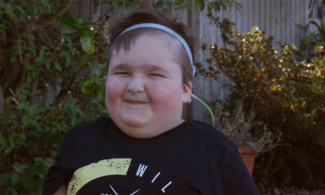
Evgenia’s Story

Evgenia’s story: I needed a bone marrow transplant to save my life. Here’s what helped me through…
Undergoing a bone marrow transplant can be a lonely experience. Here, Evgenia shares her story in the hope that it will help others going down this road.
In September 2018, shortly before turning 32, my life changed — I was suddenly diagnosed with myelodysplastic syndromes (MDS), a rare group of disorders where the bone marrow fails.
The diagnosis was unexpected given I was about 30 years younger than the average MDS patient. The cause of it was also pretty random — a sporadic and acquired genetic mutation.
However, unlike the X-Men superheroes, the mutation I had did not enable me to fly or read minds. It was set to kill me in about two years from the time of the diagnosis.
To my advantage, the MDS was caught early, and it could be fully cured. However, the path to cure was not easy. It required a bone marrow transplant (BMT). It’s one of the most complex medical procedures out there, and a lot of things can go seriously wrong.
My situation was complicated by my extremely rare type of transplant for adults — single umbilical cord blood unit — which had fatal risks associated with it.
However, it is because of the life-saving research funded by such organisations as Maddie’s Vision that I was able to live through the BMT process.
Approximately 4 months after the diagnosis, I was admitted to Ward 7B of the Royal Melbourne Hospital under the care of one of the world’s best transplanters, Professor David Ritchie, and his incredible special forces team. My initial hospital stay was about 6 weeks, but several more followed during my recovery.
I will not sugar coat it, my transplant journey was the hardest thing I ever experienced. It affected every aspect of my life. I lost almost all my hair as a result of the pre-transplant conditioning. My weight went down to 41 kgs (I’m 179 cm tall).
I had various complications that resulted in countless ambulance rides and admissions to the hospital, and there were several times I thought I would not make it. My mind was foggy and my memory and concentration were negatively affected. I felt like my body was not my own, like I had no control over it while it was growing a new bone marrow.
And despite the unwavering love, care and support of my family and friends, I felt really lonely and misunderstood.
However, I found a way to navigate through my extraordinary circumstances. I thought I’d share the things that helped me.
While each BMT journey is a unique personal experience, and what worked for me might not necessarily work for others, I hope that my story will help those going though BMT to find their own rhythm.
Bring your own doona and a hot water bottle.
It gets cooooold in the hospital!
Be friends with nurses and cleaners.
Sadly, these professionals are often so underappreciated. But it is the nurses who are there for you 24/7 at the press of a button when your body is acting out, or who comfort you when the process gets a bit too much.
And it is the cleaners who keep germs at bay when you don’t have an immune system to fend off seemingly harmless floor and bathroom bacteria. I loved getting to know these people. They are such rock stars!
As clichéd as it sounds, a positive attitude can help.
Once your old bone marrow is killed and the new one has not yet grown, your body is doing bizarre things as it fights for survival without producing blood and not having an immune system. So, the only thing in your control is your mind and how you view this situation.
Because of that, I refused to refer to the transplant process in negative terms, because I believe that words are powerful. After all, the world was created with a word, if to believe the Old Testament.
Create a daily routine and stick to it.
My hospital morning routine gave me a sense of normalcy and a feeling of some control over my life.
I woke up every morning at the same time, made my bed (or asked for it to be made when I was too weak to do so myself), had a shower, applied my skincare and put on nice clothes.
Exercise, if you can.
Your fitness is a positive factor in your recovery. Early into my BMT journey, I did yoga and used the exercise machines around the ward every day.
As I was getting weaker and could hardly walk, I would lie in bed squeezing my Pilates ring. Every little bit counts!
Incorporate elements of pre-transplant life into the recovery.
Once I left the hospital, I was doing as many pre-transplant activities as my health permitted, and that made me feel like things were getting back on track.
I tried to spend as much time as I could with my family and friends; and about six months after transplant, I returned to work, albeit part-time on light duties.
Time and patience.
Unfortunately, the bone marrow transplant process is not speedy. I received my transplant on 6 February 2019, but up until March 2020, I was not yet out of the woods: complications, strange reactions to medications, re-hospitalisations.
I was getting so frustrated and impatient with my body and with the process. However, my doctors kept telling me to give it time and be patient. When I finally followed their advice, it helped me to mentally cope better with the BMT.
Last but not least, have your own cheerleading squad.
I was blessed to be surrounded by so much love and care during my BMT. My father and husband did not leave my side, and my family and friends here and overseas provided constant support.
While I finally feel strong and healthy as a result of my transplant, it’s not an experience I would wish upon anyone.
I truly hope that in the near future there will be other curative alternatives to bone marrow transplant for MDS and Bone Marrow Failure Syndromes.
Bone marrow transplants require donors. Currently, 80% of patients in Australia will receive a donation from an overseas donor. We need more local donors!
To find out more about how you could just save a life, head to the Australian Bone Marrow Donor Registry.
More Personal Stories
DJ’s experience with Severe Aplastic Anaemia
For many patients with Bone Marrow Failure Syndromes, a bone marrow transplant is a hope for a cure. But this treatment comes with the risk of serious complications. Many patients ...
Read full storyLily’s experience with Severe Aplastic Anaemia
At just three years old, Lily was diagnosed with Severe Aplastic Anaemia. What followed was a difficult experience for the family as they navigated Lily’s treatment and the trauma of so ...
Read full storyMatty & Cheryll
Meet Matt and his grandmother Cheryll who he affectionately calls Honey. Cheryll talks about Matty's journey with Fanconi Anaemia — an inherited Bone Marrow Failure Syndrome — and her ...
Read full story





